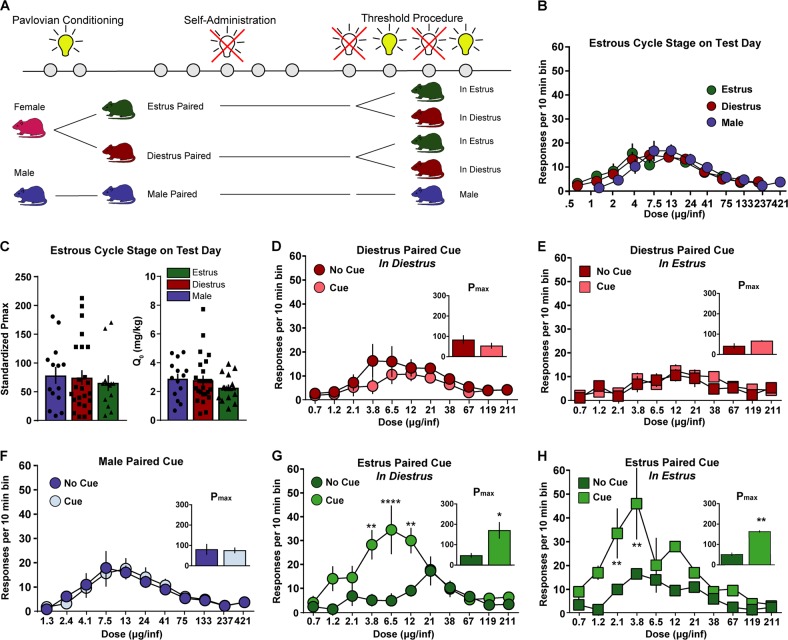Fig. 5.
Cues are critical in the expression of sex differences in motivation. a Timeline of experiments. Cues were paired during different cycle stages (estrus, diestrus, and in males) and then self-administration was conducted at different cycle stages (estrus, diestrus, males) to define the interaction between cue pairing stage and the cycle stage during self-administration (n = 4–9 per group). b Self-administration responses based on cycle stage on test day. There were no differences in responses across the dose-response curve. c No effect of cycle stage on the day of testing for motivation as measured by Pmax (left) or Q0 (right). d There was no change in responding over the dose-response curve or in Pmax (inset) in the presence of the diestrus paired cue when animals were in diestrus. e Similarly, there was no change in responding or in Pmax (inset) when cue was paired during diestrus and animal was tested in estrus. f No change in responding or in Pmax (inset) in the presence or absence of the cue in males. Cues that were paired in estrus increase motivation regardless of the cycle stage that the animal is in during testing. g Animals increased responding and Pmax (inset) in the presence of the estrus-paired cue during diestrus. h Similarly, estrus-paired cues increased responding and Pmax (inset) when animals were tested in estrus. For all panels **p < 0.01, ****p < 0.0001 compared to no cue condition. All data are presented as mean ± S.E.M

